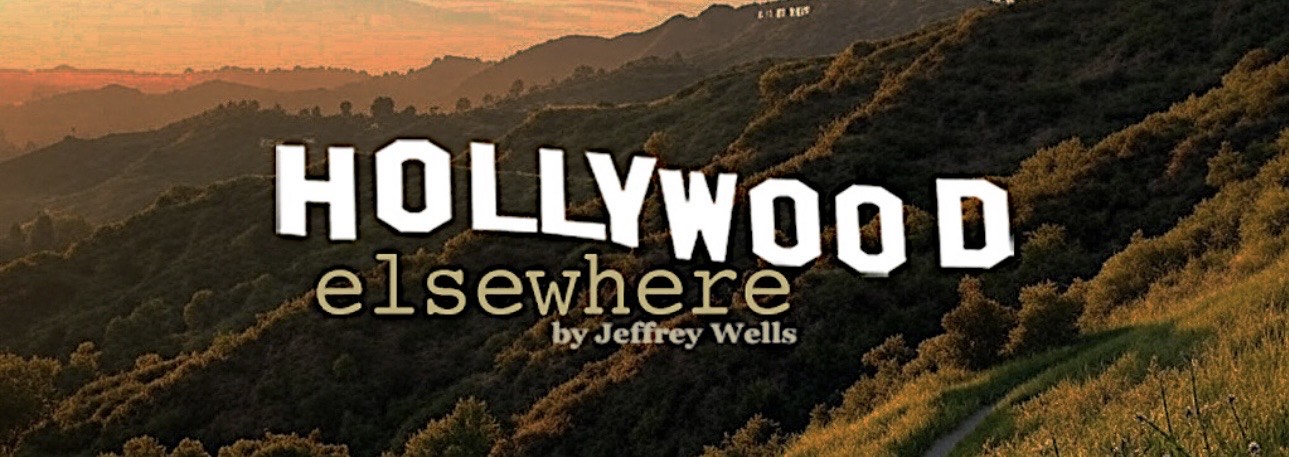“We are in the midst of a profound cinematic change,” N.Y. Times critic Manohla Dargis wrote about 25 days ago, in the immediate aftermath of Cannes, in an article called “Cinematic Change and the End of Film.” Yeah, change hurts — it feels scary, traumatic — but I’m fairly happy with most of today’s digital makeovers. Not entirely, of course, but you can’t have everything perfect.
Dargis was repeating a familiar lament about celluloid’s vinyl-like delivery system — the technology and mythology of cameras and projectors, splicing tape and editing tables and skanky projection booths, Xenon and carbon-arc lamps, eight-at-the-gate and that little ding-ding-ding sound when a reel is about to expire — giving way to digital shooting (Monte Hellman and the Canon 5D Mark II!) and digital projection — i.e., the equivalent of CD/mp3/iTunes. And implying that the film-treasuring culture that was born, grew and thrived under celluloid is being somehow altered or undermined, and that this makes Dargis feel funny.
I get that. I don’t like the feeling of ground moving under my feet any more than the next guy. But what exactly will we be losing with the gradual evaporation of celluloid and all of that Thomas Alva Edison-era technology with it?
Not all that much, really. Because today’s theatrical presentations are much, much better today than they were in the bad old analog days, for the most part. It’s not pleasant to recall all those dozens and dozens of times that I would complain to theatre managers in the ’70s and ’80s about movies being shown with weak illumination or with the wrong aperture plate in the projector or with sound that was so tinny or muffled that I had to cup my ears to hear the dialogue. That still happens occasionally, but not as much as it used to.
And because an enterprising filmmaker can shoot and present a movie in the fashion of Two-Lane Blacktop or Breathless or The Outfit or The Big Heat even, if he/she is so inclined. If you want to make a film that looks and projects as if Fritz Lang or ’60s-era Sam Peckinpah or Samuel Fuller shot it, a filmmaker can do that quite easily after capturing his/her film digitally. They just have to be careful not to allow those tell-tale digital photography signs (those “splotches of yellow in white images” that Dargis speaks of, or those inky splotches of digital blacks and blues that appear when deep shadows are part of the compositions).
I’m not saying I know for a fact that you could go out to Spain’s rugged country and the Jordanian desert and re-shoot a new Lawrence of Arabia that would contain the same exquisite 70mm values that the original 1962 film had, but I’m persuaded that you can almost capture the same thing with digital cameras these days, and that the cameras that’ll be available three or five years hence will be able to do an even better job of it.
90% if not 95% of the films I’ve seen projected the old way over the last ten years or so have not impressed me. With my fervor for film and reasonable journalistic access, I’ve experienced and been delighted by top-grade celluloid projections at first-rate houses for the last 25 years or so. But the general public has never experienced this level of projection. A relatively small culture of cinefans watch new and older films at places like the Academy theatre or the Steven Ross theatre on the Warner Bros. lot or the Arclight or the American Cinematheque in Hollywood or Santa Monica, but Joe and Jane Popcorn have never been invited and probably wouldn’t show if they were.
But now, due to digital, viewers in Bumblefuck, Colorado, are seeing films that look much brighter and sharper with rich and precise sound.
Every other time I see a classic film projected at the Film Forum (which Dargis praises for informing its patrons whether or not they’re seeing a real film or a digitally-projected image that isn’t, she says, much different than showing a Bluray disc) I feel mildly irked and let down. The image isn’t sharp or clean enough, the sound is muffled or squawky, and the black-and-white films, instead of presenting that silvery velvety sheen, look murky or sludgy. I hated the way Preston Sturges ‘ Christmas in July looked and sounded when I saw it there last fall. Ditto Nicholas Ray‘s Bigger Than Life, which I enjoyed much more when I watched it on Bluray at home.
So I’m sorry but the big changeover, from my perspective and on balance, isn’t that bad a thing.
